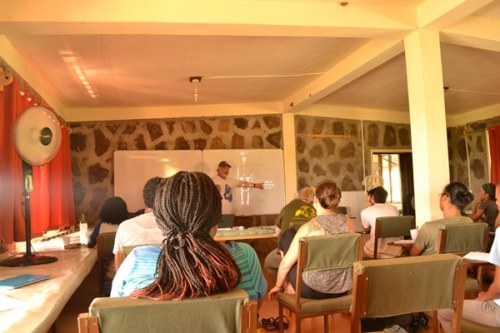
Dr. Kimbel giving a lecture on Homo floresiensis. Photo: Esther Kadaga
We are into the last week of the Human Origins module. As the students have come to find out, the phylogenetic tree of human ancestry is more bushy than expected. More hominin fossil finds have expanded our knowledge and challenged some of the traits associated with being human. One of these traits is having bigger brains relative to body size compared to other animals. A bigger brain has long been associated with the advent of tool making. The Homo floresiensis fossils from the Island of Flores in Indonesia point to a “hobbit” like human with a cranial capacity of about 417cc that lived about 60,000 years ago. It seems that it had undergone island dwarfing. This happens when a population is isolated in an island and in order to use up less resources due to competition, they become smaller. It is a phenomenon that has been observed in dwarf fossil elephants from the Mediterranean islands.
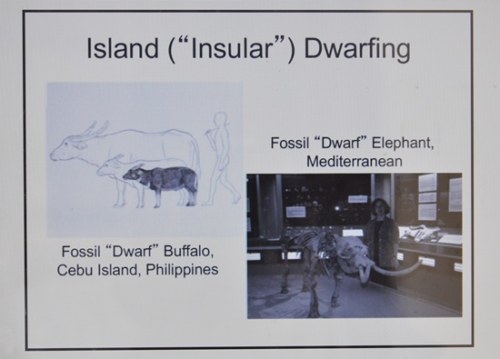
Photo from Dr. Kimbel’s lecture
Compared to several species of the genus Homo who have have been found in Africa as well as Eurasia, Homo floresiensis exhibits a lower brain size. Homo habilis the earliest Homo, dated to about 2.4 million years, has a cranial capacity of about 700cc and has been associated with the Oldowan tool technology. The interesting thing about Homo floresiensis is that Acheulean tools have been found in association with it. This technology is younger than the Oldowan and also more sophisticated. Therefore, this begs the question, is brain size the more logical way of analysing stone tool making or is it what we can actually do with our brains? This is a matter of quantity versus quality, essentially, how is the brain used? Homo floresiensis made the same tools thought to have been made by Homo erectus and archaic Homo sapiens who had even higher cranial capacities than Homo habilis. The brain is a complex organ and making inferences about cognitive capacity from living apes, humans included, is not sufficient and gives a more unilinear picture in human evolution. As mentioned at the beginning, when approaching the topic of human evolution, one is confounded with branches within more branches, quite bushy indeed!
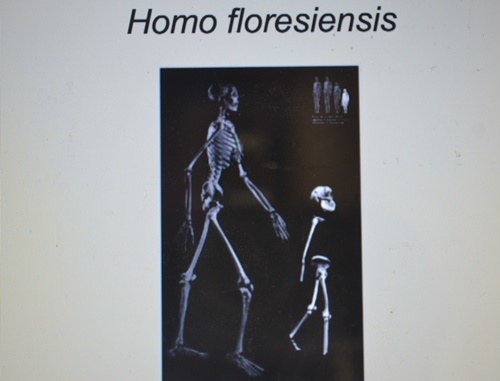
Comparing skeletons of Homo floresiensis and modern humans. Photo from Dr. Kimbel’s lecture
Wrapping up on the Human Origins module, the students got to give project presentations about topics that have peaked their interest during the course. The topics were interesting and varied in range. From investigating whether history of violence was associated with cannibalism among the Neanderthals; reconstruction of hominin paleoenvironments; and to how genetic diversity among human populations can tell us about the origins of humans. Genetic diversity seems to support the Out-of-Africa hypothesis where modern humans first evolved in Africa and then spread out to the rest of world. Sub-Saharan African populations have the highest genetic diversity compared with the rest of the human populations. The rest of the human populations share most of their genes with these African populations. This points to a common African origin for all human populations.
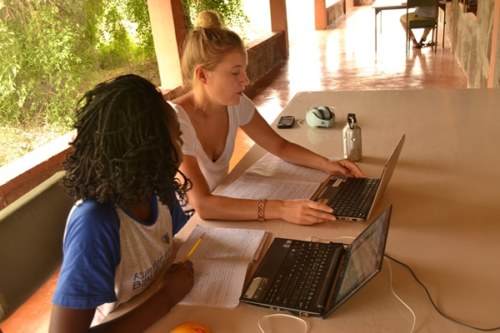
Ann and Ulla working on their project on tooth microwear of Austrolopithecines. Photo: Esther Kadaga
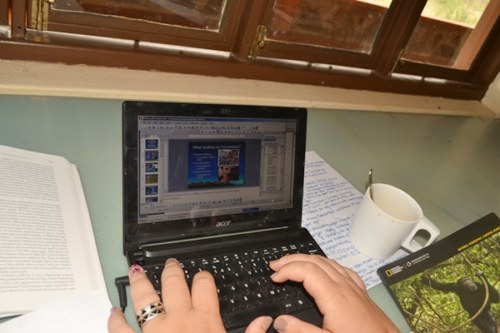
Meghan putting together her project presentation on Neanderthal cannibalism. Photo: Esther Kadaga
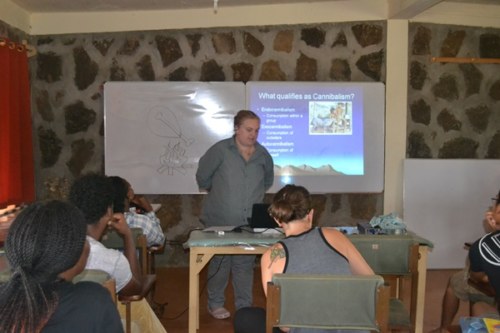
Meghan giving her presentation on Neandertal Cannibalism. Photo: Esther Kadaga
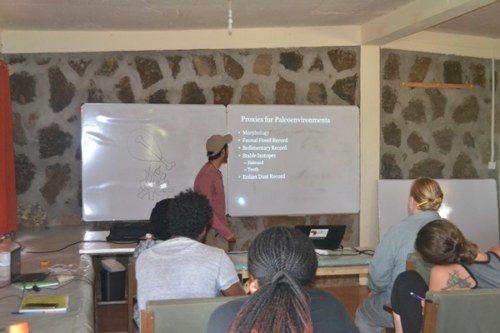
Matt giving his presentation on Methods of reconstructing Paleoenvironments. Photo: Esther Kadaga
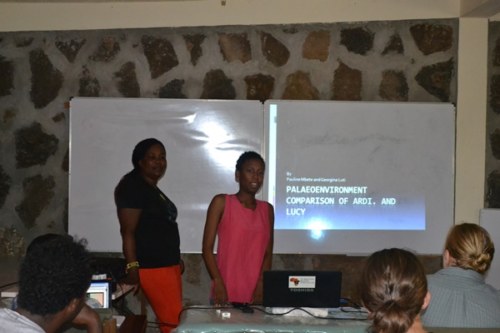
Pauline ad Georgina talking about the paleoenvironments of Ardipithecus and “Lucy”. Photo: Esther Kadaga
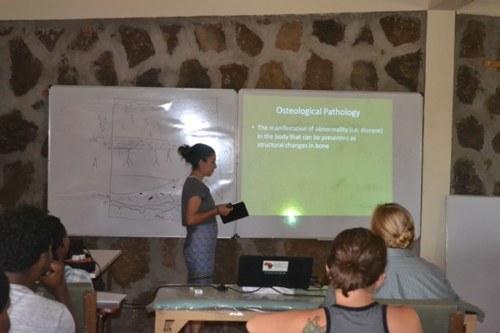
Lydia presenting on vertebral bone pathologies associated with bipedal locomotion. Photo: Esther Kadaga
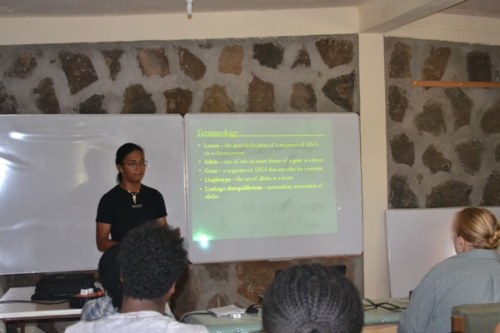
Rohan presenting on inheritance of immune genes in modern non-African humans from Neanderthals. Photo: Esther Kadaga
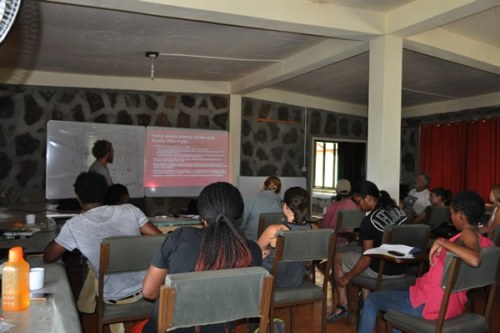
Tom explaining the genetic diversity of human populations. Photo: Esther Kadaga
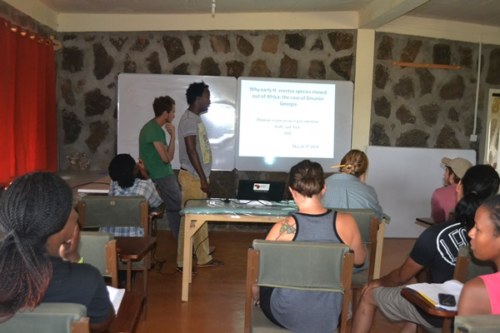
Nick and Kifle explaining why scavenging could be associated with dispersal of Homo erectus out of of Africa. Photo: Esther Kadaga
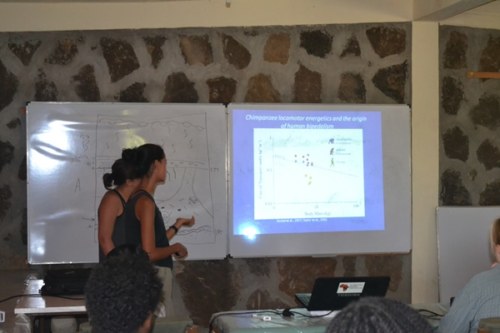
Regina and Gil analysed the efficiency of bipedal locomotion of humans for their presentation. Photo: Esther Kadaga
We had our last soccer match against the local kids from the primary school in Ileret. The field school team put up a good fight but we lost. However, we all had fun!
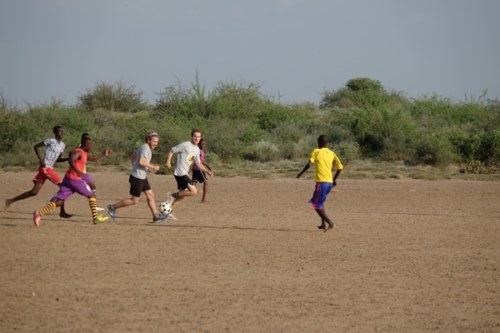
Photo: Deming
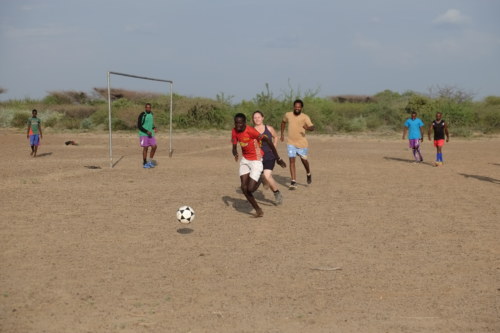
Photo: Deming
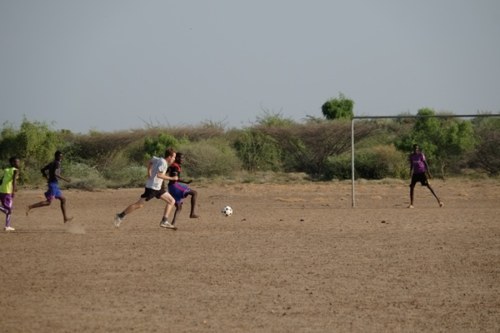
Photo: Deming
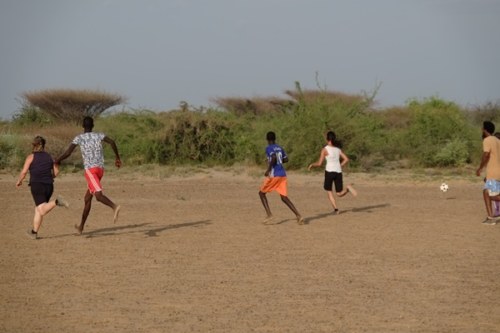
Photo: Deming
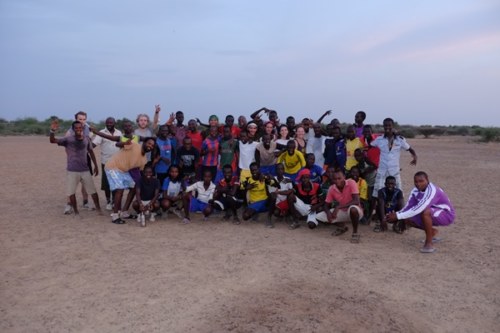
Photo: Deming
Now, we have to say goodbye to Ileret as we head off to Turkwel for the Archaeology module where we will delve into learning about ancient tool technologies!





